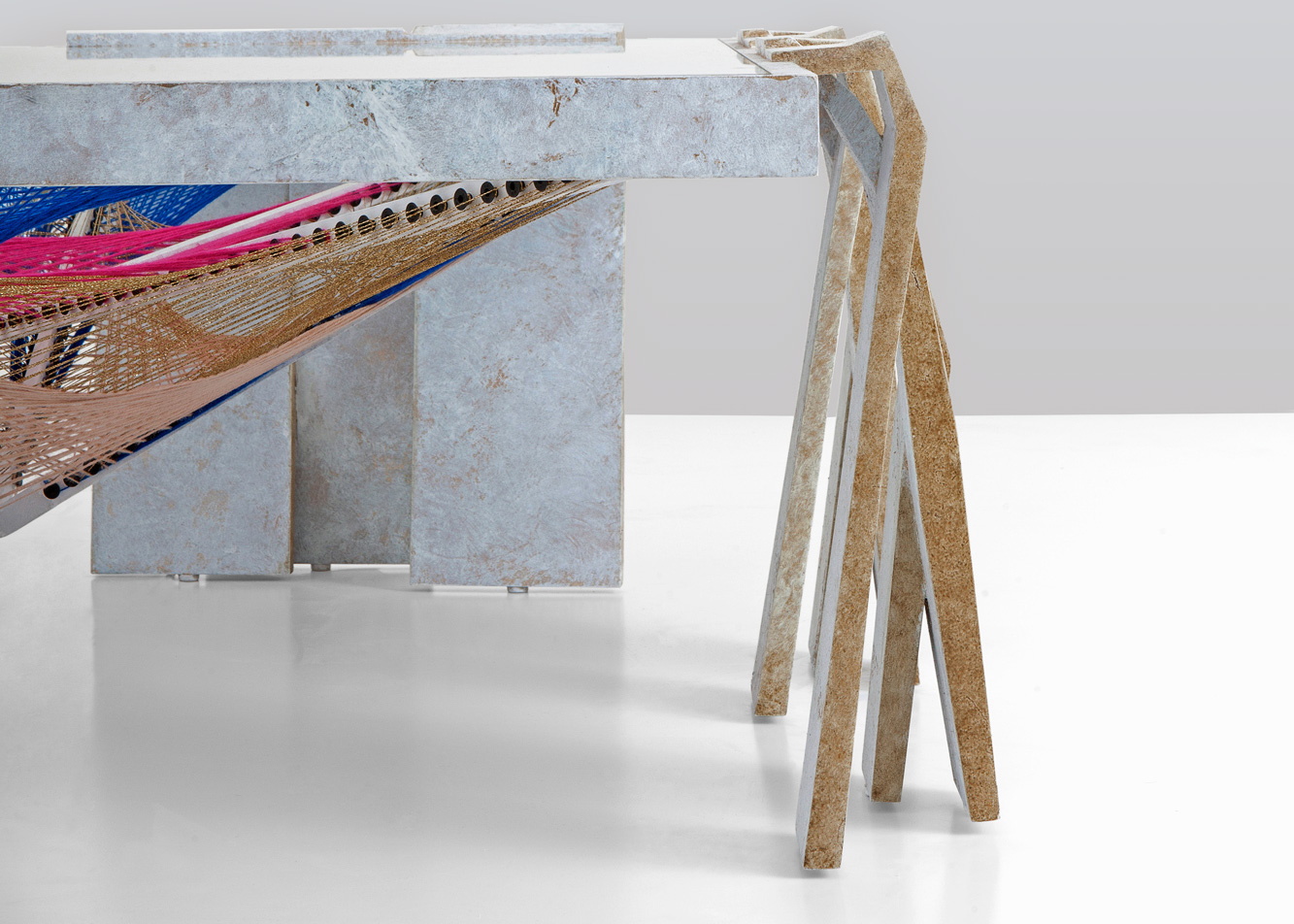Wael Farran is an architect, and also an artist, a creator and a collector. He has worked for 15 years in the field of art and manages two companies under his name, “Wael Farran Interior Architecture” and “Creations by WF”. He takes horrid situations, such as chaos and traps, and turns them into beautiful and creative pieces of art and furniture. His pieces are meant to convey a message about a brighter Beirut, and a brighter place where even the lowest of emotions and places can be transformed and metamorphosed into beautiful works of art.

Farran’s “Insan” is a collection of nine unique table pieces, all made from two kinds of wood. The tables combine aesthetics and functionality as well as a refined and luxurious take on everyday household items.
Farran derives inspiration literally from “everything around him in life”, from the simple things, such as jewelry, nature, emotions, and even people: “There’s no particular rule that I follow for the furniture, how it should look like, whether traditional or abstract as long as they are aesthetically appealing, keeping their functionality and their long lasting effect.” He believes that “a good designer is a good interpreter who can see something and translate it into art”. His pieces are labeled as human emotions and life situations (Trap, Chaos, Distortion, Trust).
“Chaos”, shown above, is made of two pieces which create a form of chaos separately but, combined, produce a functional and creative coffee table made of brass and lacquered wood.
“Distortion” evokes the layers that make up the essence of a human being: mind, body, soul, experiences, memories and emotions, as stated by Farran himself. The base which holds the table together is brass, and the wall table itself is made of acid white veneer, with steel Arabic calligraphy inlaid on top.
The table “Trap” is made of hand patina wood with string art application. It is inspired by webs and nets to depict a literal man-made trap.
To Wael, Beirut is a city encompassing both the modern with the traditional, the advanced and the classical to which he says. In the “Insan” collection, his tables are almost a revival of the history of Beirut from an emotional, oral, and very humanistic point of view of the city. He shows Beirut through the experiences of the people living in it and his collection draws from these experiences to “summarize the human condition and psyche”, bringing it into life with wood and brass, and a creative mind to sew all these complex philosophies together into one artwork.
















